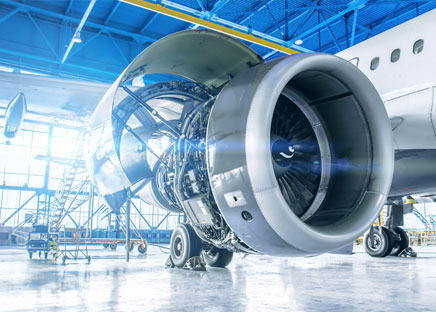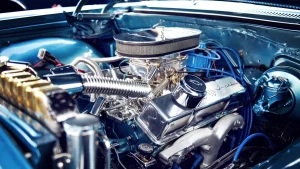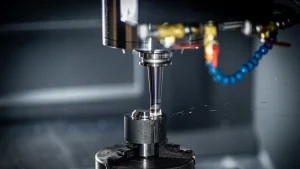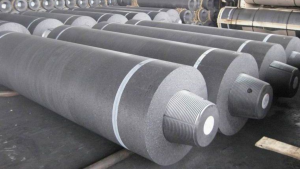
Advanced coatings are essential in addressing challenges within the aerospace and automotive industries. They safeguard components against wear, corrosion, and environmental damage, all while improving performance and durability. The SiC Coating process, especially through Chemical Vapor Deposition (CVD), delivers remarkable advantages. SiC Coating is particularly valuable for sic coating car and sic coating auto applications, as its lightweight properties meet the growing need for fuel-efficient vehicles, solidifying its role in modern transportation advancements.
Key Takeaways
- CVD coatings, like SiC Coating, make parts last longer. They reduce wear and lower repair costs for aerospace and car parts.
- These coatings handle heat well, so parts work in high temperatures. This is important for engines and exhaust systems.
- CVD coatings stop rust, keeping parts safe in tough conditions. This helps them stay strong for a long time in planes and cars.
Enhanced Wear Resistance

Protection Against Abrasion
Abrasion is a common challenge in aerospace and automotive industries, where components face constant friction and wear. CVD coatings, particularly SiC Coating, provide a robust solution by forming a protective layer that resists surface degradation. This enhanced wear resistance significantly extends the lifespan of critical parts, reducing the need for frequent replacements.
The global demand for abrasion-resistant coatings highlights their importance.
- The market was valued at approximately USD 8.5 billion in 2023 and is projected to reach USD 13.7 billion by 2032.
- Industries like transportation, oil & gas, and mining increasingly adopt these coatings to improve equipment durability.
- Benefits such as reduced maintenance costs and prolonged component life drive this growth.
By minimizing abrasion, SiC Coating ensures that aerospace and automotive components maintain their structural integrity, even under harsh operating conditions.
Applications in High-Stress Components
High-stress components, such as heat exchangers and turbine blades, operate under extreme mechanical and thermal loads. CVD coatings enhance their performance by improving wear resistance and reducing material degradation. For instance, SiC Coating has proven effective in protecting these components from wear and corrosion, ensuring reliable operation over extended periods.
The following table illustrates measurable improvements achieved through CVD coatings in high-stress applications:
| Application | Improvement Metric | Result |
|---|---|---|
| Heat Exchangers | Coking Reduction | Up to 9x reduction in coking compared to untreated stainless steel |
| Heat Exchangers | Pressure Drop | 74% improvement in pressure drop for Dursan-coated aluminum |
| Heat Exchangers | Corrosion Resistance | No rust or degradation in ASTM G85-A2 testing for Dursan-coated 316L stainless steel |
| Heat Exchangers | Wear Resistance | Improved wear rate of stainless steel by at least 2x compared to uncoated samples |
These advancements demonstrate the transformative impact of CVD coatings in high-stress environments, making them indispensable for aerospace and automotive applications.
Superior Thermal Stability
Performance in Extreme Temperatures
SiC Coating demonstrates exceptional thermal stability, making it a reliable choice for high-temperature applications. Its ability to withstand extreme conditions ensures consistent performance and durability. Research highlights that Si/SiC/ta-C composite coatings remain stable up to 600 °C. A specific variant containing 3.85 at.% silicon maintains stability even at 700 °C. This remarkable resistance to thermal degradation allows components to operate efficiently under intense heat.
The following experimental data further validates the superior thermal stability of SiC Coating under extreme conditions:
| Si Concentration (at.%) | Temperature (°C) | Observations |
|---|---|---|
| < 2.00 | 700 | Carbonization around defects, ta-C loss |
| > 3.86 | 700 | Surface maintained, some weight loss due to oxidation |
| 6.04 | 700 | Residual thickness of 220 nm after 1h, indicating excellent stability |
These findings emphasize the coating’s ability to maintain structural integrity and resist oxidation, even in the harshest environments.
Use in Aerospace Engines and Automotive Exhaust Systems
The aerospace and automotive industries demand materials that can endure extreme temperatures without compromising performance. SiC Coating has proven to be an ideal solution for such applications. In aerospace engines, it protects turbine blades and other critical components from thermal stress, ensuring long-term reliability. Similarly, in automotive exhaust systems, it enhances durability by resisting heat-induced wear and oxidation.
Several studies document the effectiveness of advanced coatings in these systems:
- Miller, R. A. (1997). Thermal barrier coatings for aircraft engines: History and directions.
- Pilsner, B., Hillery, R., & Mcknight, R. (1986). Thermal barrier coating life prediction model.
- Wellman, R. G., & Nicholls, J. R. (2007). A Review of the Erosion of Thermal Barrier Coatings.
These references highlight the transformative role of coatings in improving the efficiency and lifespan of aerospace and automotive components. By leveraging SiC Coating, manufacturers can achieve superior performance and reliability in high-temperature environments.
Improved Corrosion Resistance

Shielding Against Harsh Environments
Corrosion poses a significant challenge in aerospace and automotive industries, where components often face exposure to harsh environments. CVD coatings, such as SiC Coating, provide a robust solution by forming a protective barrier that shields materials from corrosive elements. This advanced coating technology enhances the durability of components, ensuring long-term performance even under extreme conditions.
Studies have demonstrated the effectiveness of these coatings in resisting corrosion:
- Immersion tests in 20% hydrochloric acid and 25% sulfuric acid revealed that 316L stainless steel with Dursan coating exhibited a 60-fold improvement in corrosion resistance compared to uncoated samples.
- Coated stainless steel coupons showed minimal pitting and significantly reduced corrosion rates in various acidic environments.
These results highlight the transformative role of CVD coatings in protecting critical components from degradation, making them indispensable for industries that demand reliability and longevity.
Applications in Aerospace and Automotive Structures
The aerospace and automotive sectors rely on materials that can withstand corrosive environments while maintaining structural integrity. CVD coatings, including SiC Coating, have proven highly effective in these applications. For instance, aerospace-grade aluminum and lightweight aluminum alloys benefit from enhanced corrosion resistance, making them ideal for aircraft wings, fuselages, and automotive structures.
The following table illustrates the practical applications of improved corrosion resistance in these industries:
| Material Type | Corrosion Resistance | Application Areas |
|---|---|---|
| Aerospace-grade Aluminum | Highly resistant | Aircraft wings, fuselages, marine use |
| Lightweight Aluminum Alloys | Moderate to high | Aerospace and automotive structures |
| Dursan Coating | High durability | Analytical flow paths |
By leveraging advanced coatings, manufacturers can ensure that aerospace and automotive components remain resilient against environmental challenges, ultimately enhancing safety and efficiency.
Increased Surface Hardness
Benefits for Cutting Tools and Machined Parts
Increased surface hardness plays a pivotal role in enhancing the performance and durability of cutting tools and machined parts. Research demonstrates that surface treatments, such as vibratory surface finishing (VSF), significantly improve surface hardness by inducing severe plastic deformation. This process increases hardness values from 19 Hv to a range of 21–22 Hv, which delays crack formation and extends the lifespan of components. Additionally, VSF treatment enhances tensile strength and yield strength, as supported by the Hall–Petch equation, which links smaller grain sizes at the surface to improved material strength. These enhancements are critical for industrial applications where tools and parts endure high stress and wear.
Laboratory tests further quantify these benefits through precise measurement methods. The following table outlines how increased surface hardness is evaluated and its advantages for cutting tools and machined parts:
| Aspect | Description |
|---|---|
| Method | Indentation-based method using a diamond indenter to measure hardness. |
| Measurement | Diagonal lengths of the indentation are measured to calculate the Vickers hardness number. |
| Benefits | Provides insights into material characteristics such as strength, toughness, and wear resistance. |
| Applicability | Suitable for a wide range of materials, from soft to very hard, making it versatile for various applications. |
These findings highlight the transformative impact of surface hardness on the reliability and efficiency of cutting tools and machined parts.
Applications in Automotive Transmission Systems
Automotive transmission systems demand materials with exceptional surface hardness to withstand constant friction and mechanical stress. CVD coatings, such as SiC Coating, enhance the hardness of transmission components, ensuring smoother operation and reduced wear over time. By modifying the microstructure of the material, these coatings induce compressive residual stress and work-hardening effects, resulting in a 15% improvement in surface hardness. This enhancement not only increases the durability of transmission systems but also minimizes maintenance requirements, leading to cost savings for manufacturers and vehicle owners.
The integration of advanced coatings in automotive transmission systems exemplifies the importance of surface hardness in achieving superior performance and longevity. By leveraging these innovations, the automotive industry continues to push the boundaries of efficiency and reliability.
Optimized Efficiency and Longevity
Reduction in Maintenance Costs
CVD coatings significantly reduce maintenance costs by enhancing the durability and efficiency of aerospace and automotive components. These coatings, such as SilcoKlean and Dursan, minimize fouling and coking, which are common issues in high-temperature environments. For instance, testing with JP-8 fuel at 500°C revealed that SilcoKlean-coated stainless steel exhibited far less carbon buildup compared to uncoated parts. This reduction in fouling not only improves heat transfer but also decreases the frequency of maintenance, leading to substantial cost savings.
The following table highlights key efficiency metrics and longevity improvements achieved through CVD coatings:
| Metric | Improvement/Statistic |
|---|---|
| Coking Reduction | Up to 9x reduction compared to untreated steel |
| Pressure Drop Reduction | 74% improvement in pressure drop |
| Corrosion Resistance | No rust or degradation in salt spray testing |
| Wear Rate Improvement | At least 2x improvement over uncoated samples |
| Temperature Resistance | Withstands up to 800°C without property change |
These advancements demonstrate how CVD coatings extend the lifespan of critical components, reducing operational disruptions and maintenance expenses.
Enhanced Fuel Efficiency in Aerospace and Automotive Engines
Fuel efficiency remains a top priority in aerospace and automotive industries. CVD coatings contribute to this goal by reducing friction and wear in engine components, ensuring smoother operation and optimal energy utilization. By maintaining surface integrity under extreme conditions, these coatings enhance combustion efficiency and reduce energy losses.
For example, the application of SiC Coating in automotive engines has shown measurable improvements in fuel economy. The reduced friction between moving parts minimizes energy wastage, allowing engines to operate at peak performance. Similarly, in aerospace engines, the coatings protect turbine blades from thermal and mechanical stress, ensuring consistent performance over extended periods.
By integrating advanced CVD coatings, manufacturers achieve a dual benefit: improved fuel efficiency and reduced environmental impact. These innovations pave the way for more sustainable and cost-effective transportation solutions.
CVD coatings have revolutionized aerospace and automotive industries by enhancing wear resistance, thermal stability, corrosion protection, surface hardness, and efficiency. Their precise control over material properties ensures exceptional performance in demanding environments. SiC Coating exemplifies this innovation, offering unmatched durability and reliability. Ningbo VET Energy Technology Co. provides advanced solutions tailored to these critical applications.
FAQ
What is CVD coating, and why is it important?
CVD (Chemical Vapor Deposition) coating creates a thin, durable layer on materials. It enhances wear resistance, thermal stability, and corrosion protection, making it vital for aerospace and automotive industries.
How does SiC Coating improve fuel efficiency?
SiC Coating reduces friction and wear in engine components. This ensures smoother operation, minimizes energy loss, and optimizes combustion efficiency, leading to improved fuel economy.
Tip: Regular maintenance of coated components ensures maximum performance and longevity.
Can CVD coatings withstand extreme environments?
Yes, CVD coatings, especially SiC Coating, resist high temperatures, corrosion, and mechanical stress. They maintain structural integrity, even in harsh aerospace and automotive conditions.





